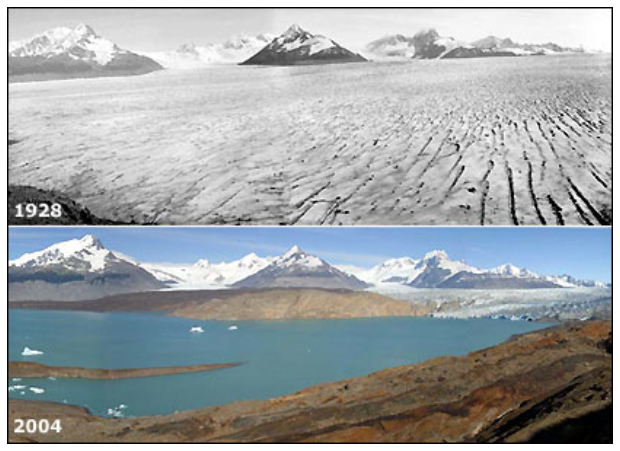Many populations are dependent on the seasonal flux of glaciers as a source of drinking water. As glaciers continue to retreat, water shortages are expected. A population of two billion is reliant on the annual supply of freshwater from Himalayan glaciers. Moreover, glacier loss in Ganga is predicted to reduce available freshwater by 2/3. This would constrain drinking water for 500 million inhabitants and greatly reduce water availability for agriculture. Many other countries also significantly rely on glaciers as a source of freshwater including Peru, Bolivia, Ecuador and Kazakhstan.
On the contrary, in some areas of glacial melt, flooding poses great risk. Glaciers feed many river and lake systems. When these are inundated with melt water, outbursts into surrounding land can occur; threatening inhabitants and infrastructure. Glacier melt water has also affected sea level. It is projected that sea levels will rise globally by around 0.4mm per year as glaciers continue to melt. Unfortunately, many settlements are built upon vulnerable islands and coastal regions. Sea level rise threatens to flood these areas, eroding the land into the sea (WWF, 2002; DeBeer et al., 2016).
These circumstances create an opportunity for collaboration in order to resolve the challenges being faced. GlacierHub is a nexus to link the people who are concerned about glaciers, so that they can communicate with each other and develop responses to these changing landscapes. Their objective is to expand and deepen the understanding of glaciers, provide information about current scientific research, tell stories of people who live near glaciers or who visit them, and to offer accounts of the efforts of communities and organizations to address the many repercussions associated with the retreating glaciers.

(Robert A. Rohde, Global Warming Art).
References
Glaciers Links
Material on this page was edited by Maren Pauly and Tristan Mills, Department of Geography, University of Waterloo.
